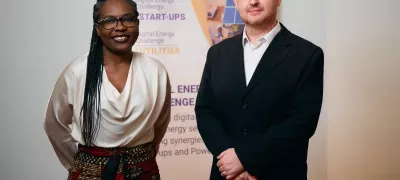
A project led by Nanoé
« Specifically designed for the African rural environment, our electrification model, called "Lateral Electrification," combines technological innovation and innovative organizational approach, » explains Nolwenn Le Saux, co-founder of Nanoé.
Context
Widespread access to electricity is now possible thanks to the development of huge electrical networks covering the entire territory and designed to transport and distribute electricity produced by large centralized power units to the densest urban centers and remote rural areas. However, this electrification model is not feasible or only marginally so in many African countries, and it is not necessarily desirable either. T
he hierarchized electrical infrastructure limits resulting from this development model clash with their compatibility with the transition to a decarbonized, decentralized, and collaborative economy. Rural African populations are not always connected to centralized power generation units, either for financial or low population density reasons.
For these reasons, Nanoé promotes a new "lateral" electrification approach achieved by progressively interconnecting elementary decentralized, intelligent, and locally managed network blocks. They introduce the concept of nanogrids, that is, off-grid solar systems linking 4 to 6 households to electricity, which can in turn be interconnected to form microgrids.
Objectives
- The overall objective of the project is to prepare Nanoé's innovative energy access solutions for large-scale deployment in Madagascar and commercialization to other energy access actors in the rest of sub-Saharan Africa.
- They aim to develop access to electricity and employment by creating a new, progressive and modular electrification model for Africa based on renewable energy and information technologies through lateral electrification.le.
- They also aim to develop a network of local and decentralized organizations to educate and assist nano-entrepreneurs in building and operating nanogrids.
Activities
The first systems were deployed in the Ambanja district in 2017. By the end of 2024, more than 12,000 homes will be connected (to date, more than 10,200), and the start-up hopes to extend its project to other villages on the African continent.
Impacts
The goal for 2025 is to install 3000 nanogrids and electrify 12000 households.



